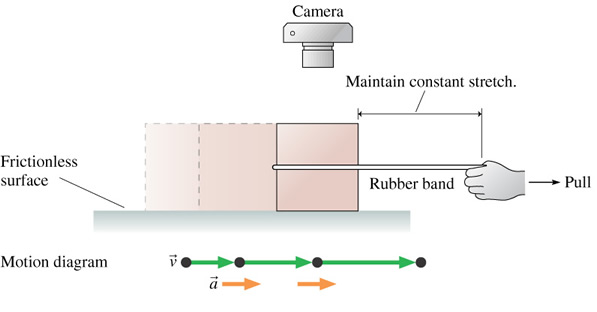Tutorials begin this week. Homework #1 is due in tutorial.
PHY100S has "Drop Boxes" for each of our five tutors. Beginning with the second homework assignment, all homework and papers should be submitted by putting them into the appropriate box by the day and time that is specified. The home page of PHY100S has been updated and provides further details.
We are almost "on track" with the Syllabus for the course. We didn't quite finish §4.4 in class today, but almost did.
| You may access the questions and answers for the first Pre-Class Quiz by clicking on the blue button. The pdf document will appear in a separate window. |
I will probably wish to "re-cycle" these questions in future years. Thus I have disabled printing of the questions and answers. The document will remain available to you via the above link until after the Final Exam.
Our introduction to forces was conceptually similar to the textbook, but differs in how it was actually discussed. We used the following figure as part of our discussion:
 |
The Law of Inertia is often called Newton's First Law. However before Newton, Galileo and his followers stated an incomplete form of the law and Descartes gave a complete form of it in 1644. Here is how Newton wrote it in the Principia (1687 AD):
“In the absence of external forces, an object at rest remains at rest and an object in motion continues in motion with constant velocity.”
In China, a form of this law appeared considerably earlier. It is attributed to Master Mo (Mo Tzu) who lived in the the third century BC. Here is a fragment from the Book of Mo (Mo Ching, also sometimes called the Pulse Classic):
"The cessation of motion is due to the opposing force ... If there is no opposing force ... the motion will never stop.“
Through the years many followers added material to the Mo Ching, so the exact date of the above statement is not known. It was certainly in the book by the third century AD.
| Here is today's Journal file in pdf format. Separate window. |